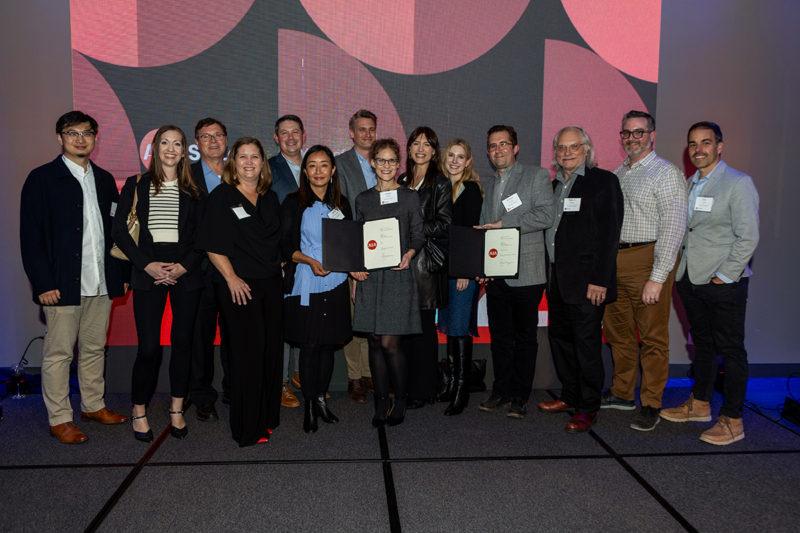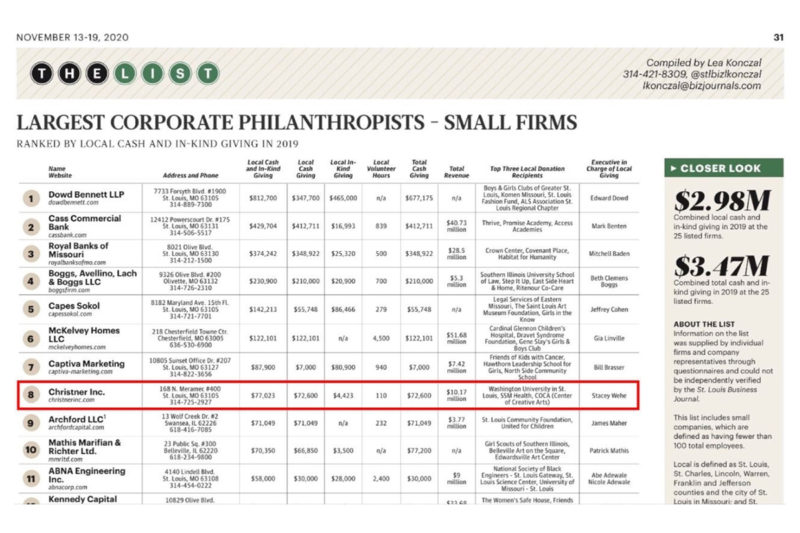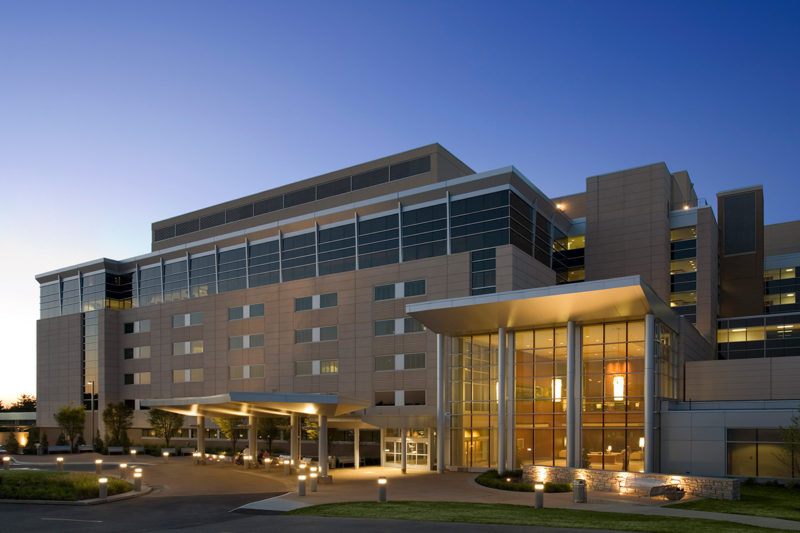Christner is an established planning and design firm known for bringing innovation, research and insight to the practice of architecture. In recent years, Christner has expanded our expertise to the Science and Research market, specifically in plant science building design. St. Louis has experienced a rapid growth in the plant and life science industry over the past few decades. Christner is proud to be a part of such an impactful research industry with the design of two plant and life science projects, Donald Danforth Plant Science Center Expansion and KWS.
(Picture)
Leading the planning and design for this growing industry is Christner’s Science and Research Market Leader, Paulina Bugyis, Intl. Assoc. AIA. She brings over 18 years of planning and design experience, working with higher education and corporate clients regionally and nationally. A passionate and committed professional, Paulina has dedicated her career to vivarium and laboratory planning and design, advocating for science, research and discovery. She brings a depth of experience in helping clients develop efficient and creative environments that support researcher collaboration that propels the advancement of science. The combination of Paulina’s expertise and Christner’s recent design experience is elevating Christner to a plant science design leader.
Christner: St. Louis has carved a niche for itself as a plant science hub. What are some of the things that have set our city up for growth in this market?
Paulina Bugyis: I believe that over the years the St Louis area has supported the growth of scientists and a skilled workforce based on the presence of Monsanto Global headquarters and the Donald Danforth Plant Science Center. In addition to large corporate clients, the strong support of business enterprises like Cortex and BRDG Park, as well as academic research institutions with strong biosciences growth like Washington University have also added to the significant growth of the St. Louis plant science market. The Missouri Botanical Garden, with its longtime leaders in plant science, has also advanced St. Louis’s recognition as a plant science hub.
As an urban environment, St. Louis offers a community that is active, socially diverse with a very strong offering in education, jobs, and family life. It is no surprise that KWS, a German seed company set their North American headquarters in the St. Louis area, after considering other larger cities like Boston, San Francisco, and the Research Triangle Park in North Carolina.
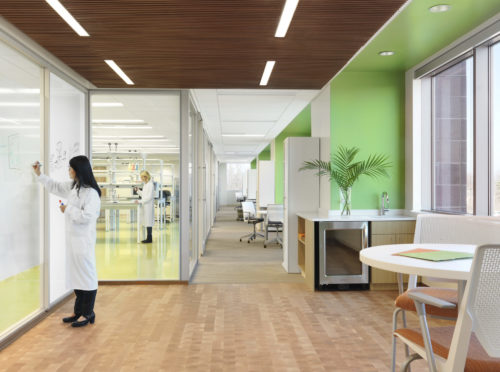
Christner: What are some of the biggest challenges of designing for plant sciences?
Paulina Bugyis: When we plan for plant science, it is important to understand the flow of activities within the different groups and at times, look through a crystal ball to set up the lab design for adaptability to new technologies without compromising efficiencies of space. The planning considerations have become broader, as we must consider an additional building type besides the labs and core areas, such as greenhouses and how those elements are related to the lab space and the researchers’ activities. The goal for the design team is organizing these elements so they align with the site, staff workflow, and most importantly the mission of the institution.
Christner: In 2016, Christner completed the expansion to the Donald Danforth Plant Science Center. What are some of the features of this project that make a researcher’s job easier?
Paulina Bugyis: The design of this facility was developed around 6 clear objectives:
- Create flexible, efficient, and transparent research space
- Stimulate interaction among scientists
- Reinforce a single research community
- Create a highly sustainable facility
- Respect the iconic research building
- Integrate building and landscape
The top three objectives focus on designing an environment conducive to directly and indirectly making the researchers job easier. Two important design principles that were established were transparency and re-envisioning the landscape.
Transparency and access to daylight and views were important drivers of the building expansion. The building floorplate allows for excellent daylighting to the labs and write up areas. The transparent lab design allows for collaboration between teams, as well as connectivity to the outdoors. A glazed wall between the open lab and open-office write-up area establishes a strong visual connection between the two spaces, while still providing the necessary containment for the labs. Transparency between the local community and research was also a design objective. Touring routes throughout the building feature floor to ceiling glass walls that bring the visitors closer to the research with the vision of putting science on display. Visual connectivity between open labs and write up areas allows for opportunities for more interaction between researchers and shared support facilities, allowing for informal encounters and collaboration. The atrium acts as a community center, accommodating informal teaming activities and casual meetings around coffee and food.
Another important design principle for the project was connecting researchers to the landscape and to the larger context of the work they are doing. The turf grass and manicured landscaping that previously characterized the property has been transformed into a restored, tall-grass prairie. This puts the building in a much different context that is more indicative of the work and research that goes on inside the facility. The write-up spaces and PI offices are located in the expansion wing to overlook the greenhouses, providing a connection between the research being conducted inside the lab building and the work being done in the greenhouses.
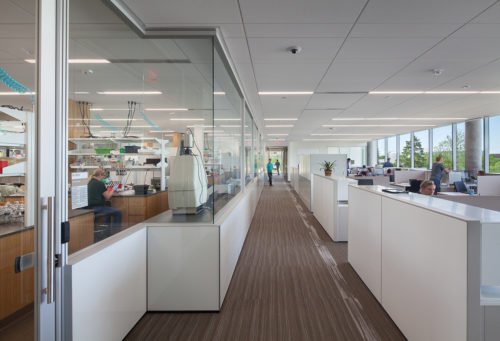
Christner: How important are collaboration spaces in plant science facilities?
Paulina Bugyis: Collaboration is a key component of any research institution or program, not just in the plant sciences field. It has become a great source of inspiration when it comes to designing public spaces in a building where investigators navigate through different departments and meet, take a break, read a publication, or talk to a colleague about a joint effort while enjoying a cup of coffee. These casual “collision” spaces have gained traction as opportunities where personal connections and discussions take place. These spaces, as well as a formal destination gathering spaces like conference rooms and seminar rooms become catalysts for research. In the Donald Danforth Plant Science Center Expansion, the new auditorium, strategically located close to the laboratory area is used for scientific symposia and is a place where scientists can share their work with colleagues.
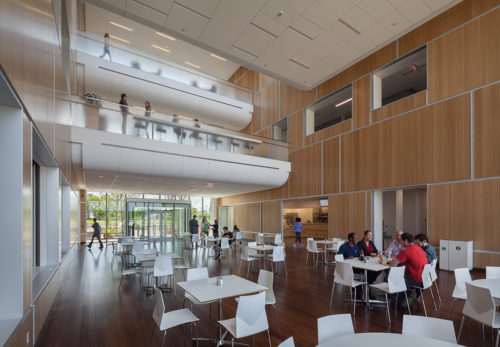
Christner: In the next five years, what changes do you expect to see in the way plant science buildings are designed?
Paulina Bugyis: We anticipate that automation in facilities, like the Phenotyping Facility at Danforth, will flourish and continue to play an important role in research and could potentially take precedent over traditional bench space because of the real-time analysis and data/imaging gathering capabilities. In this scenario, locating office space or communal data access areas in close proximity to these type of core facilities will also be a design priority.
Today we have the ability to simulate environments where plants can grow and take images of their growth in multiple stages and gather data. We can only imagine what the development of these systems will be in the short and long-term. Without a doubt, technology will continue to drive the development of equipment in support of plant science, not to displace other work, but to promote a mission that we fully expect will continue to be the primary goal for plant science research.

